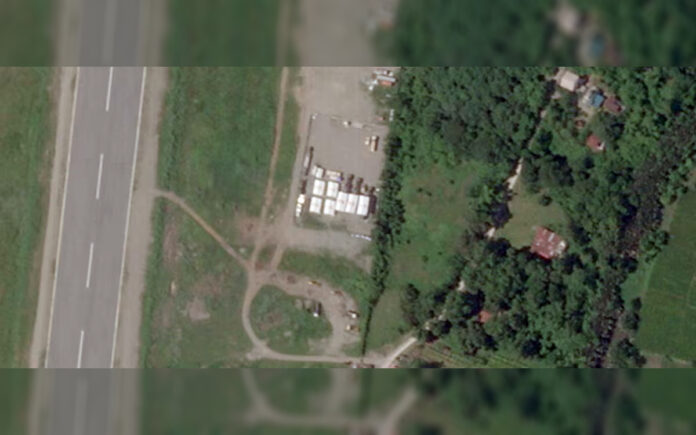Manila: The United States has no immediate plans to withdraw a mid-range missile system deployed in the Philippines, despite demands from China, and is actively testing its feasibility for use in a potential regional conflict, sources familiar with the situation told, as reported by the international news agency Reuters.
The Typhon system, capable of launching cruise missiles to strike Chinese targets, was initially brought to the Philippines for joint exercises earlier this year and has remained there since. The Southeast Asian archipelago, a crucial partner for the U.S. in Asia, serves as a vital staging ground for military operations, especially in the event of a Chinese attack on Taiwan.
China and Russia have condemned this deployment, marking the first introduction of the missile system to the Indo-Pacific region, and accused the U.S. of exacerbating an arms race. The deployment details, some of which were not previously disclosed, come amid heightened tensions between China and the Philippines over contested territories in the South China Sea. Recent months have seen numerous maritime and aerial confrontations in this strategically significant waterway.
Philippine officials confirmed that Filipino and U.S. forces are continuing to train with the missile system, located in northern Luzon, which faces the South China Sea and is near the Taiwan Strait. They reported no immediate plans for its withdrawal, even though the joint exercises are set to conclude at the end of the month. Colonel Louie Dema-ala, a spokesman for the Philippine army, stated that training is ongoing and that the decision on the missile system’s duration in the country rests with the United States Army Pacific (USARPAC).
A Philippine government official noted that the Typhon system, designed to be mobile, is currently in the Philippines for “testing the feasibility of deploying it in-country, so that when the need arises, it could easily be deployed here.” The office of Philippine President Ferdinand Marcos Jr. did not respond to requests for comment.
Also Read | Coffee Growers Seek Delay in EU Deforestation Requirement
“Sleepless Nights”
The U.S. Army transported the Typhon system, which can launch missiles like the SM-6 and Tomahawks with a range exceeding 1,600 km (994 miles), to the Philippines in April, describing it as a “historic first” and a “significant step in our partnership with the Philippines.” A note from the U.S. Congressional Research Service at that time stated, “It is not known if this temporary deployment could eventually become permanent.”
In July, Colonel Dema-ala confirmed that the Typhon missile launcher remained in the northern islands of the Philippines, stating that there was no specific date for its departure, correcting earlier reports that it was expected to leave in September. A satellite image taken on Wednesday by Planet Labs and reviewed by the international news agency Reuters confirmed the Typhon’s presence at Laoag International Airport in Ilocos Norte province.
Jeffrey Lewis, director of the East Asia Nonproliferation Program at the James Martin Center for Nonproliferation Studies, analyzed the images and noted that the system is still operational. A senior government official emphasized that there are currently no plans for withdrawal. “If it is pulled out, it is because the objective has been achieved, and it may be brought back after repairs or construction,” the official explained, adding that keeping the system has strategic value for the Philippines in deterring China. “We want to give them sleepless nights.”
Also Read | Elon Musk’s X Defies Brazilian Ban with Sneaky Software Update
Anti-ship Weapons and Indo-Pacific Missile Race
The U.S. has been amassing various anti-ship weapons in Asia as part of its effort to rapidly advance in the Indo-Pacific missile race, where China currently holds a significant advantage. Although the U.S. military has not disclosed the exact number of deployments in the region, government documents outline plans to acquire over 800 SM-6 missiles in the next five years, alongside several thousand Tomahawks already in U.S. inventories.
China has repeatedly denounced the deployment of the Typhon system, including a statement from Wu Qian, spokesperson for China’s defense ministry, in May, asserting that Manila and Washington are bringing “huge risks of war into the region.” Russian President Vladimir Putin also referenced the deployment when announcing his country’s plans to resume production of intermediate- and shorter-range nuclear-capable missiles.
In July, Philippine Foreign Affairs Secretary Enrique Manalo reassured his Chinese counterpart that the presence of the missile system poses no threat to China and will not destabilize the region. Meanwhile, China has fully militarized at least three of the islands it constructed in the South China Sea, equipping them with anti-ship and anti-aircraft missiles, despite a 2016 arbitral ruling that favored the Philippines. China maintains that its military facilities in the Spratly Islands are purely defensive, asserting its right to develop its territory as it sees fit.



